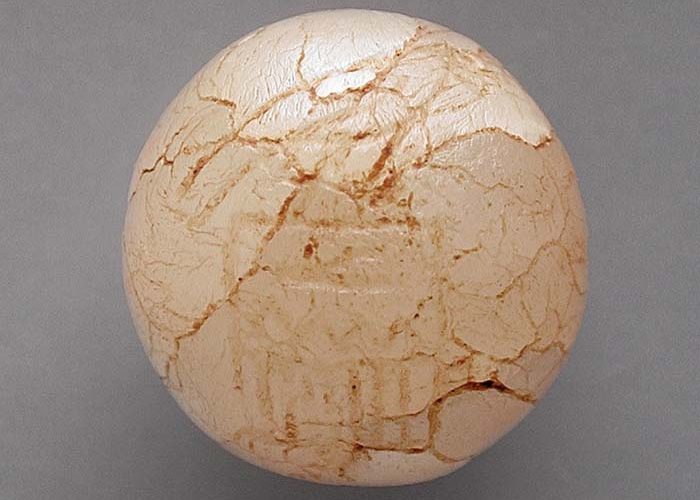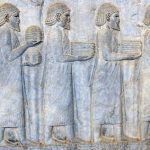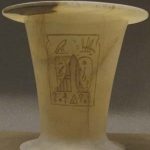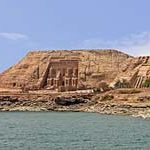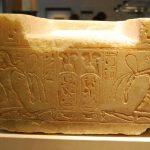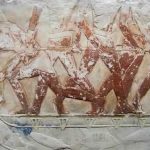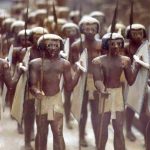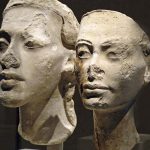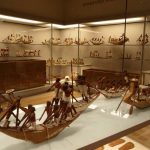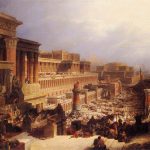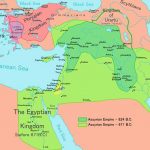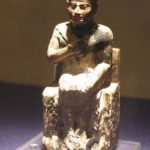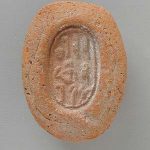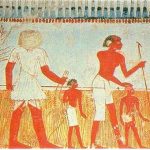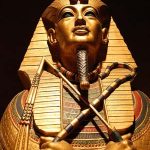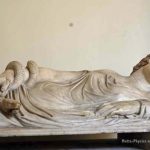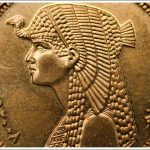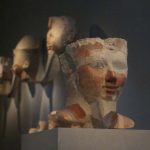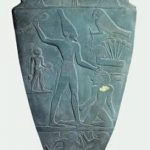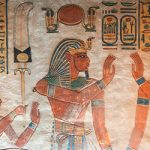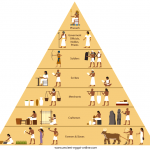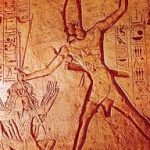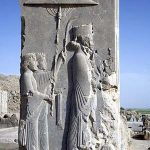Predynastic Period (c.5300-3000 B.C.)
Neolithic
The first part of the Predynastic period is the Neolithic period. Agriculture became the main food source in the Nile Valley and communities worked together to raise food. Egyptologists discovered pits used to store grain. They also found Beads and cosmetic palettes in Neolithic tombs.
Some communities also got food from domestic animals, fishing and hunting. One Neolithic site, Naba Playa, was larger than normal and had an unusual feature that scholars believe to be a religious site. This was a large megalithic complex consisting of arrangements of rocks of different sizes.
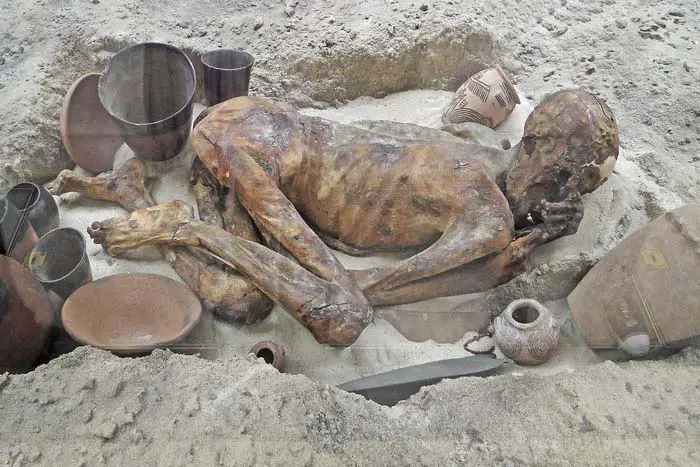
© fmpgoh – Grave from the early badarian period
Badarian Culture
This culture marks some of the earliest examples of agriculture in Upper Egypt and most of its relics come from cemeteries. These cemeteries show signs of social divisions because wealthy graves were in one area. All the bodies were in the same position and faced in the same direction. Some examples of Badarian pottery have thin walls that later cultures did not emulate. The jewelry found to date is usually made of bone or ivory.
Naqada Culture
Naqada culture is also known through cemeteries and covers three periods. Thousands of graves from Naqada I contain goods including animal-shaped cosmetic palettes. Some burials included rectangular coffins and most contained only one body. They contained goods made of hard and soft stone. These included disc-shaped mace heads and human figurines of hunters or warriors with beards. Context suggests the Naqada people saw beards as symbols of power.

© Mary Harrsch – Naqada figurines
Naqada II shows some differences from Naqada I in tomb size and grave goods. Multiple-body burials increased and the tombs were larger with more goods. Some burials show the evidence of the earliest use of linen for body wrappings. More metal goods were in evidence and mace heads were pear-shaped.
Naqada III shows the beginning of territorial states and includes the kings dubbed Dynasty O by scholars. These kings ruled before the unification of Egypt and scholars know little about them beside their names. Certain tombs had many rooms and early hieroglyphics on some labels.
Artifacts made of precious materials including; gold, lapis lazuli, and silver. These materials show the Naqada civilization traded with other cultures. Scholars discovered some religious buildings but little information currently exists about the rituals practiced.
Early Dynastic Period (c.3000-2686 B.C.)
1st Dynasty
The pharaohs created state goods, shown by labels, used as part of a taxation system. Officials appointed by the king oversaw irrigation and began standardizing hieroglyphic writing. They also helped support the funeral programs and religious sites. Priests used certain funeral rites for the pharaoh only during this period.
Abydos was the site where many of the 1st Dynasty’s kings built their tombs but people plundered and burned them in antiquity. They had a unique feature found only in the tombs of these pharaohs: bodies of humans sacrificed to serve the pharaoh in the afterlife. Egyptologists excavated religious sites and artifacts including a compound for the goddess Neith. Priests established funerary cults to provide for the pharaoh’s needs in the afterlife.
During this dynasty, many cultural changes exist in the archaeological record. Art styles became more formal and the pharaoh supported artisans and workers to make goods. Egyptologists found a bracelet made of amethyst, gold, lapis lazuli and turquoise. Copper from the Eastern Desert or the Negev/Sinai show mining or trading expeditions took place.
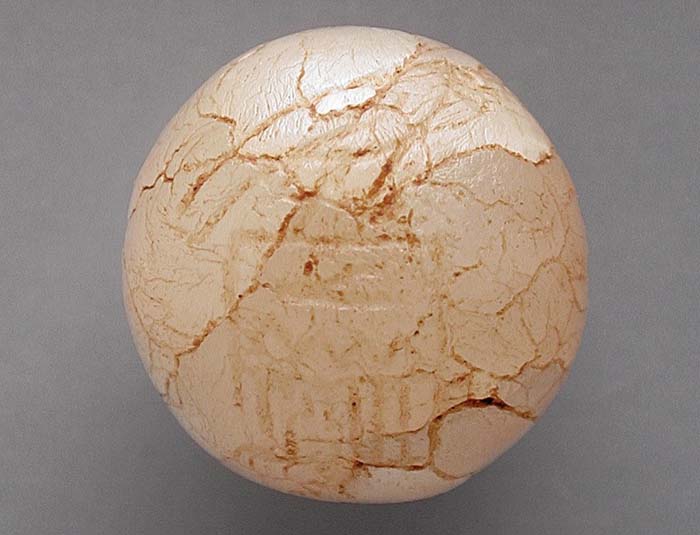 © Ashley van Haeften – Inscribed Marble, 1st dynasty
© Ashley van Haeften – Inscribed Marble, 1st dynasty
2nd Dynasty
Little evidence of many of these kings exists in the current archaeological record. The pharaohs established the economic and political foundations for a strong central state. Khasekhemwy’s tomb had a large gallery divided into at least sixty rooms. Limestone was the medium used to make his burial chamber which is the oldest stone building found in Egypt so far.
The Early Dynastic Period was a time when Egypt’s government formed and built the society’s foundations. The pharaohs established trade with the Sinai, Palestine, Lebanon, Nubia and the Eastern Desert. Writing helped the Egyptian state organize and the pharaoh was Egypt’s ultimate authority.
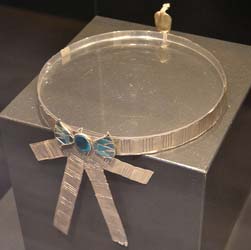
© Jan – 17th Dynasty Diadem


